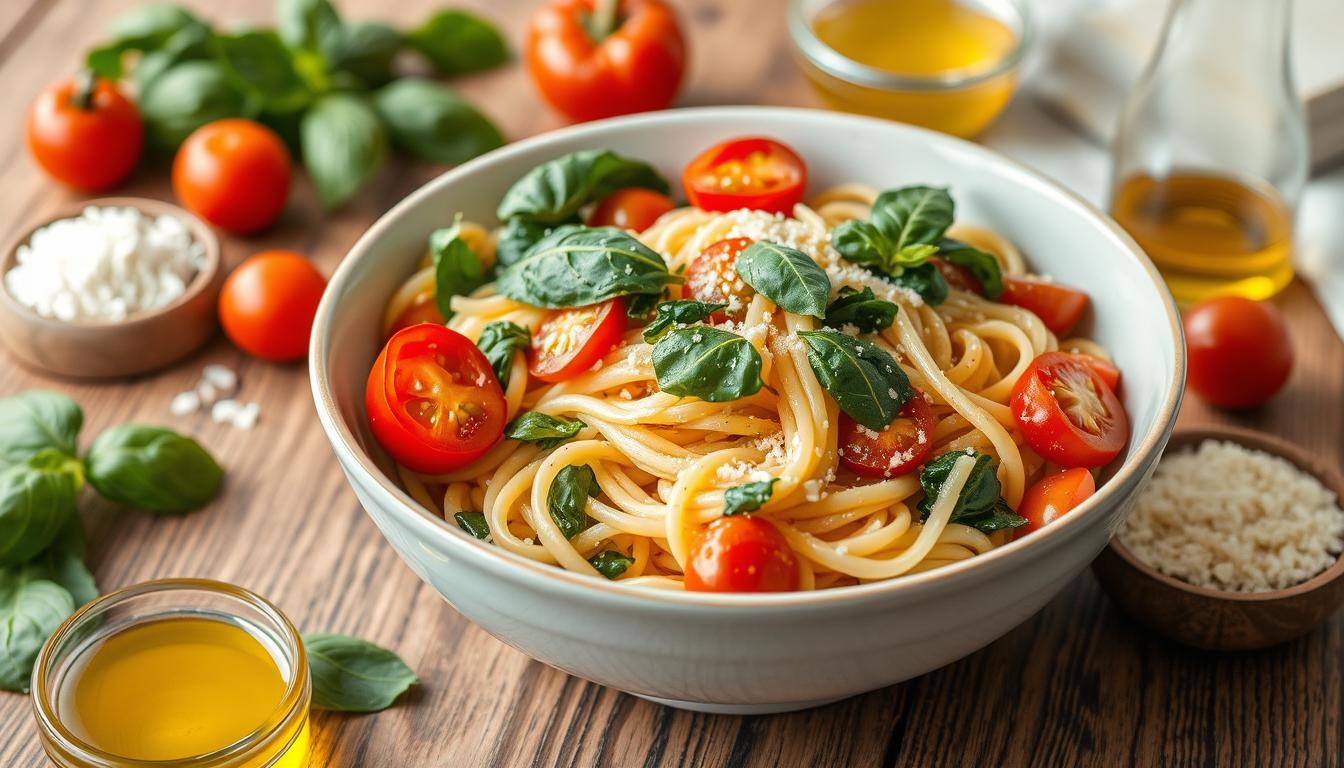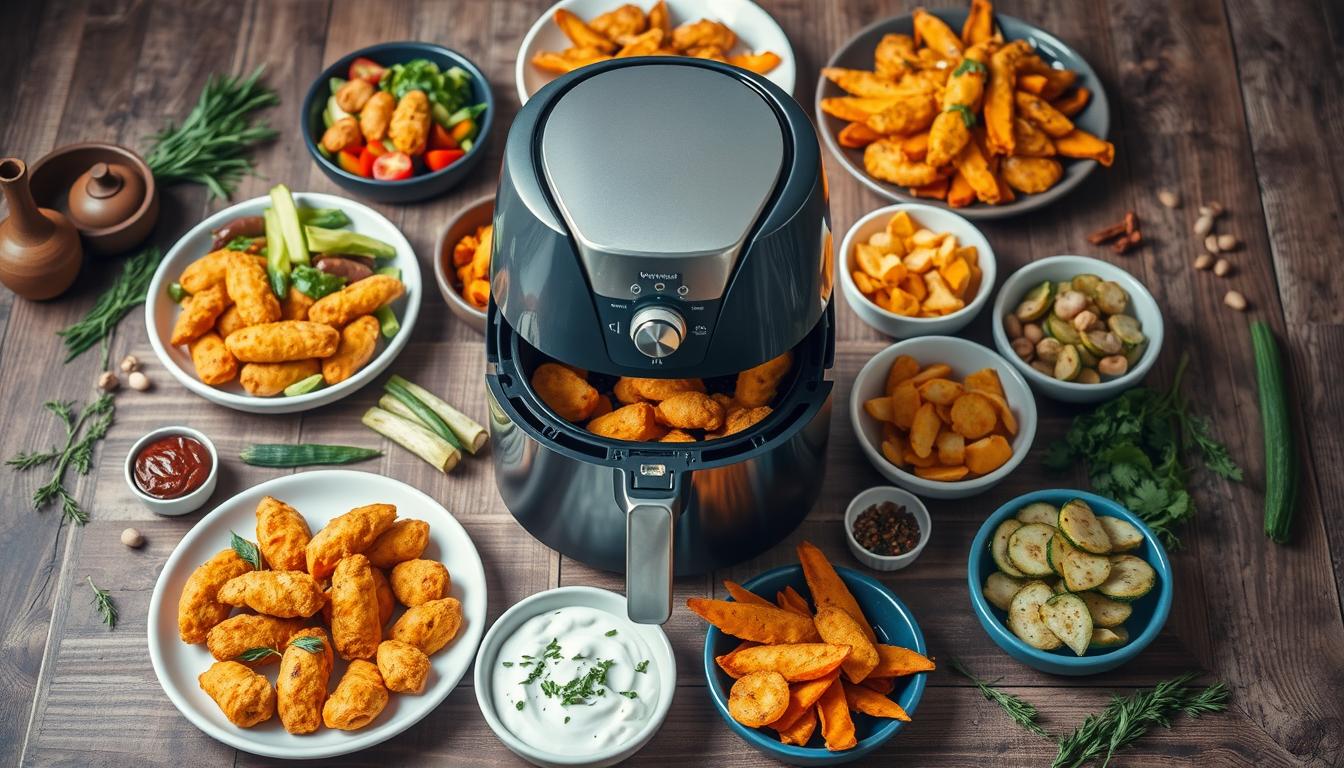Did you know Heinz sells over 650 million ketchup bottles every year1? Store-bought ketchup often has preservatives and lacks natural flavors. But, you can make your own ketchup at home for a fresh taste. This homemade House recipe ketchup recipe lets you choose what goes in it.
You can adjust the sweetness and avoid preservatives2. You can keep it in the fridge for three weeks or freeze it for six months1. People love this recipe for its taste and how easy it is to make.
The History and Evolution of House recipe ketchup
Ketchup has a rich history that spans centuries. It started as a non-tomato sauce and evolved into the popular condiment we love today3. The first ketchup was a fermented fish sauce from southern China, dating back to 300 B.C3.
Over time, different ketchups emerged, like oyster and mushroom ketchups. Even fruit-based ketchups were popular3.
From Fish Sauce to Tomato-Based Condiment
Tomatoes arrived in England from South America in the 1500s. But people were cautious about eating them for a long time3. It wasn’t until 1812 that James Mease created the tomato-based ketchup we know today3.
This new ketchup quickly became a hit in America. It was easier to say than the old types4.
The Birth of Modern Ketchup by Heinz
In 1876, Heinz made its famous tomato ketchup. It had tomatoes, vinegar, sugar, salt, and spices3. This ketchup became the top choice in the U.S., with over 650 million bottles sold yearly35.
Ketchup has come a long way from its fish-based roots. Now, it’s a must-have in 97 percent of U.S. homes35. The journey of ketchup, from its early forms to Heinz, shows its lasting appeal and versatility.
Benefits of Making Your Own House Recipe Ketchup
Making your own ketchup at home has many benefits. You can skip the high-fructose corn syrup and preservatives found in store-bought ketchups6. Plus, it’s cheaper and you can make it how you like, like using less sugar or honey6.
Homemade ketchup is fresher and tastes better than store-bought7. It’s made with ripe tomatoes and special spices for a healthier choice7. You can also adjust the vinegar and sugar to your liking, making it truly yours7.
- Avoid high-fructose corn syrup and preservatives found in store-bought ketchup
- More cost-effective than commercial varieties
- Customize the recipe to suit your dietary needs, such as reducing sugar
- Enjoy a fresher, more flavorful ketchup that enhances various dishes
- Tailor the vinegar and sugar levels to your personal taste preferences
By making your own ketchup, you get a natural, healthy, and sugar-free option67. It’s easy to make and lets you control what goes into it, making it great for those who care about their health67.
Essential Ingredients for Homemade House recipe ketchup
Making delicious homemade ketchup is easy with just a few key ingredients. Start with ripe, flavorful tomatoes. They can be fresh or canned, giving the ketchup its tangy and sweet taste8. To add sweetness, use brown sugar, maple syrup, or honey8.
Vinegar, like white or apple cider, adds a subtle tartness that goes well with the tomatoes8.
The spice blend is what makes homemade ketchup special. Use onion powder, garlic powder, salt, celery salt, black pepper, and mustard powder8. For extra depth, try adding warm spices like allspice or cinnamon9. Onions, garlic, and ginger can also boost the flavor8.
Fresh vs Canned Tomato Options
Both fresh and canned tomatoes are great for homemade ketchup. Fresh tomatoes give a bright, garden-fresh taste. Canned tomatoes offer a consistent texture and flavor8. Choose based on your taste and the ketchup’s texture you want.
Spices and Seasonings Guide
The spice blend is key to a great homemade ketchup. Use onion powder, garlic powder, salt, and pepper. Add a bit of cayenne or smoked paprika for a kick8. Try herbs like thyme, oregano, or basil for unique flavors.
Sweeteners and Vinegar Selection
To balance the tomatoes’ acidity, add a bit of sweetness. Brown sugar, maple syrup, and honey are great choices8. White or apple cider vinegar adds a tangy contrast to the sweetness8.
“Homemade ketchup can be made in just 5 minutes, or the slow-cook version requires about 1 hour. The slow-cook version yields approximately 24 servings, while the quick no-cook recipe serves about 1 tablespoon per serving. Homemade ketchup can be stored in the fridge for up to 2 weeks in airtight containers.”
With these ingredients, you’re ready to make perfect homemade ketchup. Try different spice blends, sweeteners, and vinegars to find your favorite flavor.
Kitchen Equipment Needed for Preparation
To make homemade ketchup, you need the right kitchen tools for the best taste and texture11. A big saucepan or slow cooker is needed to cook the ketchup mix11. You’ll also need a blender or immersion blender to make it smooth11.
A fine-mesh strainer is key to strain the ketchup and get rid of seeds or skins11.
For the no-cook method, a strong blender is all you need for smooth ketchup11. You’ll also need sterilized jars or bottles to store your homemade ketchup11. A food processor helps with chopping, and measuring cups and spoons are for the right amounts of each ingredient11.
- Large saucepan or slow cooker for cooking the ketchup mixture
- Blender or immersion blender for smoothing the consistency
- Fine-mesh strainer for achieving the perfect texture
- Powerful blender for the no-cook method
- Sterilized jars or bottles for storage
- Food processor for chopping ingredients
- Measuring cups and spoons for accurate proportions
With the right tools and equipment, you’ll make delicious homemade ketchup that will wow everyone111213.
Step-by-Step House Recipe Ketchup Process
Making your own simple ketchup recipe at home is simpler than you might think. It starts with sautéing onions and mixing them with fresh, ripe fresh tomato ketchup recipe or tomato paste. Add spices and vinegar to the mix14.
Preparing the Base
Begin by cooking chopped onions in a bit of oil until they’re soft and smell good. Next, add the diy ketchup recipe tomatoes (or tomato paste), red wine vinegar, brown sugar, Worcestershire sauce, and spices like garlic, paprika, and cloves14.
Cooking and Reducing
For a slow-cook method, let the mix simmer for 40 minutes to 12 hours. Stir often to avoid sticking. This makes the ketchup thick and flavorful15.
Blending and Straining Techniques
When the ketchup is just right, blend it until smooth. Use an immersion blender or regular blender14. Then, strain it through a fine-mesh strainer to get rid of any chunks or seeds. This makes the fresh tomato ketchup recipe silky-smooth14.
| Ingredient | Quantity |
|---|---|
| Ripe Roma Tomatoes | 2 cups, quartered |
| Tomato Paste | 2 cups |
| Red Wine Vinegar | 1/4 cup |
| Brown Sugar | 1 1/2 cups |
| Worcestershire Sauce | 2 tablespoons |
For a quicker method, blend all ingredients together until smooth. Add a bit of water if it’s too thick14.
“The key to perfect homemade ketchup is patience and detail during cooking. Take your time, and you’ll get a condiment better than store-bought.”
Remember, your diy ketchup recipe can be stored in an airtight container in the fridge for 2-3 weeks. Or freeze it for up to six months for longer storage141615.
Quick vs Slow-Cooked Method Comparison
When making homemade ketchup, you can choose between quick and slow-cooked methods. The quick method uses tomato paste and is ready in about 5 minutes17. It has a milder taste but is better than store-bought ketchup. The slow-cooked method, which takes 1 to 12 hours, uses fresh or canned tomatoes. It makes a richer, more complex flavor17.
The quick method is great for those in a hurry but want homemade ketchup17. The slow method takes longer but offers a deeper flavor that many prefer17. You can also tweak both methods to fit your taste, adjusting sweetness, acidity, and spices.
Choosing between quick and slow depends on your time and taste. Homemade ketchup is healthier and tastier than store-bought17. With a bit of effort, you can make a quick ketchup guide or enjoy a slow-cooked version that enhances your cooking.
Tips for Achieving the Perfect Consistency
Getting the right homemade ketchup consistency is all about the cooking process. To get a thick and shiny texture, keep simmering until it’s just right18. If it’s too thin, reduce it on the stovetop. If it’s too thick, add a bit of water18.
For a smooth finish, blend the ketchup base well and strain out solids18. This makes it velvety-soft, enhancing your homemade condiments18.
Troubleshooting Common Issues
Getting the flavors right takes practice. If it tastes flat, add more vinegar for a tangy flavor18. For sweetness, add sugar until it’s just right18. For spice, add red pepper flakes or chili powder18. Let the flavors mix before adjusting.
When using fresh tomatoes, blanch and peel them for the best texture18. This step takes time, but it’s worth it for a silky sauce18.
Adjusting Flavors to Taste
Homemade ketchup is all about personal taste. Taste as you go and adjust to your liking18. Some like to add more sugar or cornstarch for thickness18.
Adjusting flavors makes your homemade ketchup vibrant and fresh18. Enjoy the process, be creative, and relish your homemade ketchup!
Storage and Preservation Guidelines
Keeping your homemade organic ketchup recipe fresh is important. To enjoy its taste for longer, follow these tips:
- Store ketchup in airtight containers or sterilized jars in the refrigerator. It will last up to two weeks when stored right19.
- Freeze ketchup in freezer-safe bags for up to six months for longer storage19.
- Use clean utensils to avoid contamination when serving19.
- For pantry storage, can ketchup safely following proper canning steps19.
- Always check for spoilage before using. Discard if you notice any unusual odors or looks19.
| Storage Method | Shelf Life |
|---|---|
| Refrigerator | Up to 2 weeks |
| Freezer | Up to 6 months |
| Canned (Properly Processed) | Up to 1 year |
By using these storage tips, you can enjoy your organic House recipe ketchup for weeks or months192021.
“Proper storage and preservation techniques are essential for maximizing the shelf life and quality of homemade ketchup.”
Creative Ways to Use Homemade House recipe ketchup
Homemade ketchup is more than just a condiment. It brings fresh, vibrant flavor to your cooking22. You can drizzle it over eggs, make ketchup jam, or marinate meats22. It’s also great for sweetening stir-fries, opening up endless possibilities22.
Don’t just use it for burgers and fries. Try adding it to soups, as a pizza or pasta sauce, or even make ketchup butter22. It can also enhance casseroles, skillets, and baked goods with its unique flavor22. Try different types like Spicy Ketchup or Unsweetened Ketchup to find the perfect match for your dishes22.
Use homemade ketchup to make your meals more flavorful22. It’s great for braising, glazing, or adding to meatballs and meatloaf22. By making your own ketchup, you open up a world of culinary adventures22.
FAQ
What is homemade ketchup and how does it differ from store-bought versions?
Homemade ketchup is a fresh, tangy condiment made with simple ingredients. It includes tomatoes, vinegar, sugar, and spices. Unlike store-bought ketchup, it doesn’t have preservatives and tastes better.
What are the key ingredients needed to make homemade ketchup?
To make homemade ketchup, you need tomatoes, vinegar, and sweeteners. You also need spices like onion powder, garlic powder, and salt. Some recipes add allspice or cinnamon for extra flavor.
What equipment is required for making homemade ketchup?
You’ll need a large saucepan or slow cooker for cooking. A blender or immersion blender is for smoothing the mixture. A fine-mesh strainer helps get the perfect consistency. A food processor is useful for chopping ingredients, and measuring cups and spoons ensure accurate proportions.
What are the different methods for making homemade ketchup?
There are two main methods. The quick method uses tomato paste and takes about 5 minutes. The slow-cooked method, which takes 1 hour to 12 hours, uses canned or fresh tomatoes for a richer flavor.
How do you achieve the ideal consistency for homemade ketchup?
Cook the ketchup until it’s thick and shiny. If it’s too thin, reduce it; if too thick, add water. Blend well for smoothness and strain to remove solids. Adjust flavors by adding vinegar, sugar, or salt.
How long does homemade ketchup last, and how should it be stored?
Homemade ketchup lasts up to two weeks in airtight containers or sterilized jars in the fridge. For longer storage, freeze it in freezer-safe bags for up to six months. When canning, follow proper procedures for food safety.
How can homemade ketchup be used beyond a simple condiment?
Homemade ketchup is versatile. Use it as a base for BBQ sauces or in meatloaf glazes. It’s great in sloppy joe mixtures, marinades for meats, or as a flavor enhancer in soups and stews. For a spicy version, add extra chili or hot sauce.




























